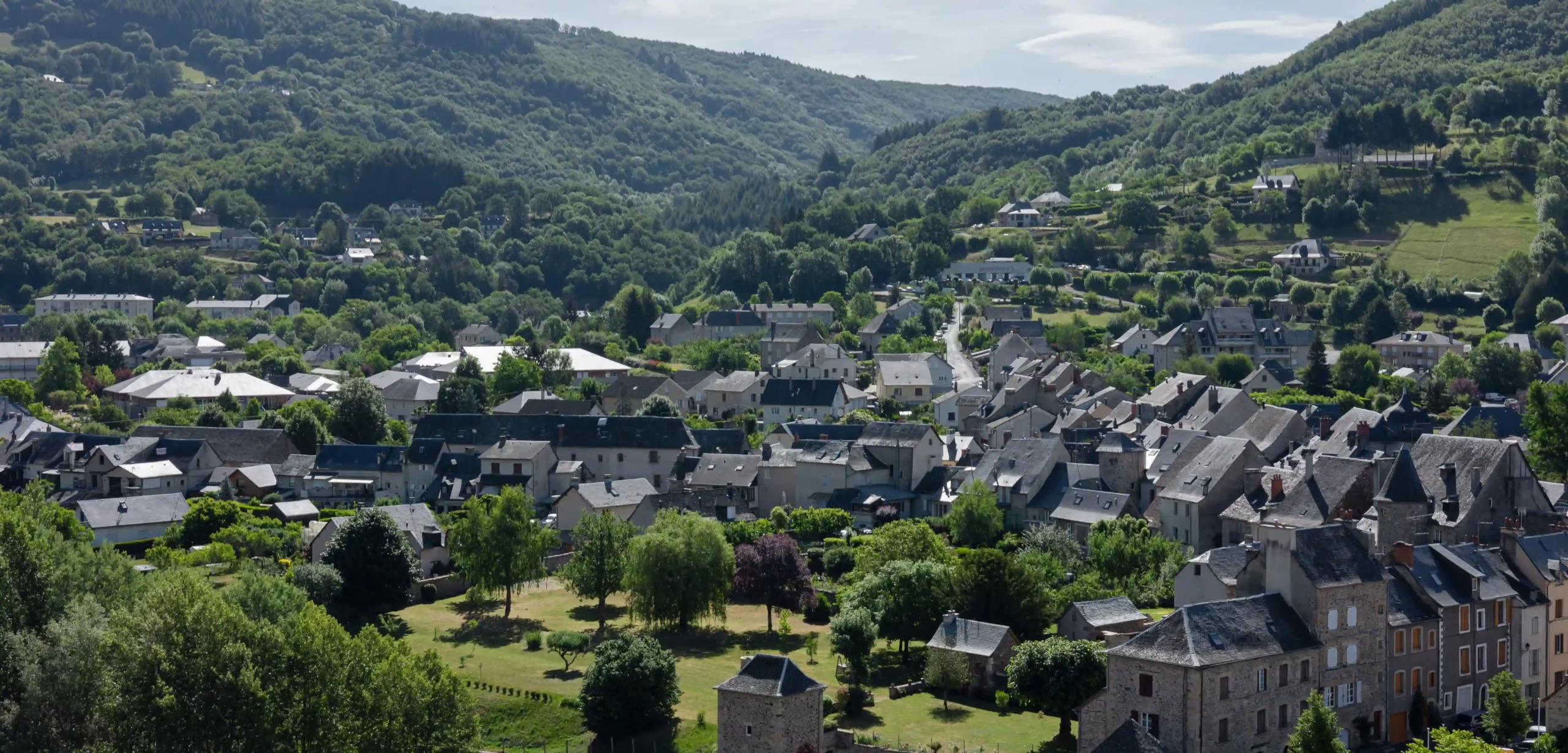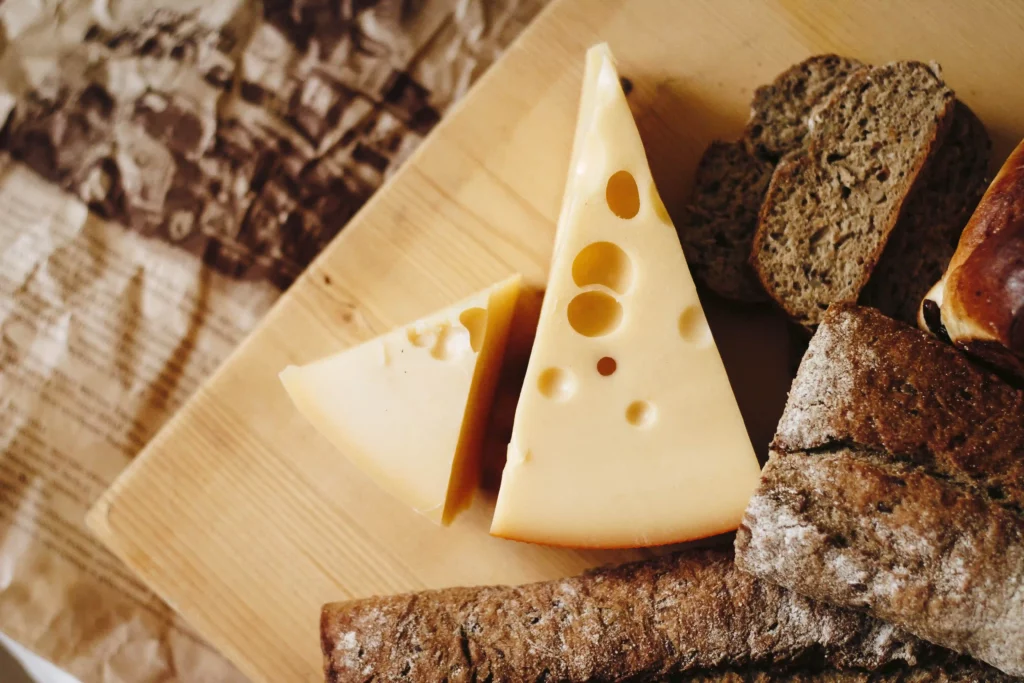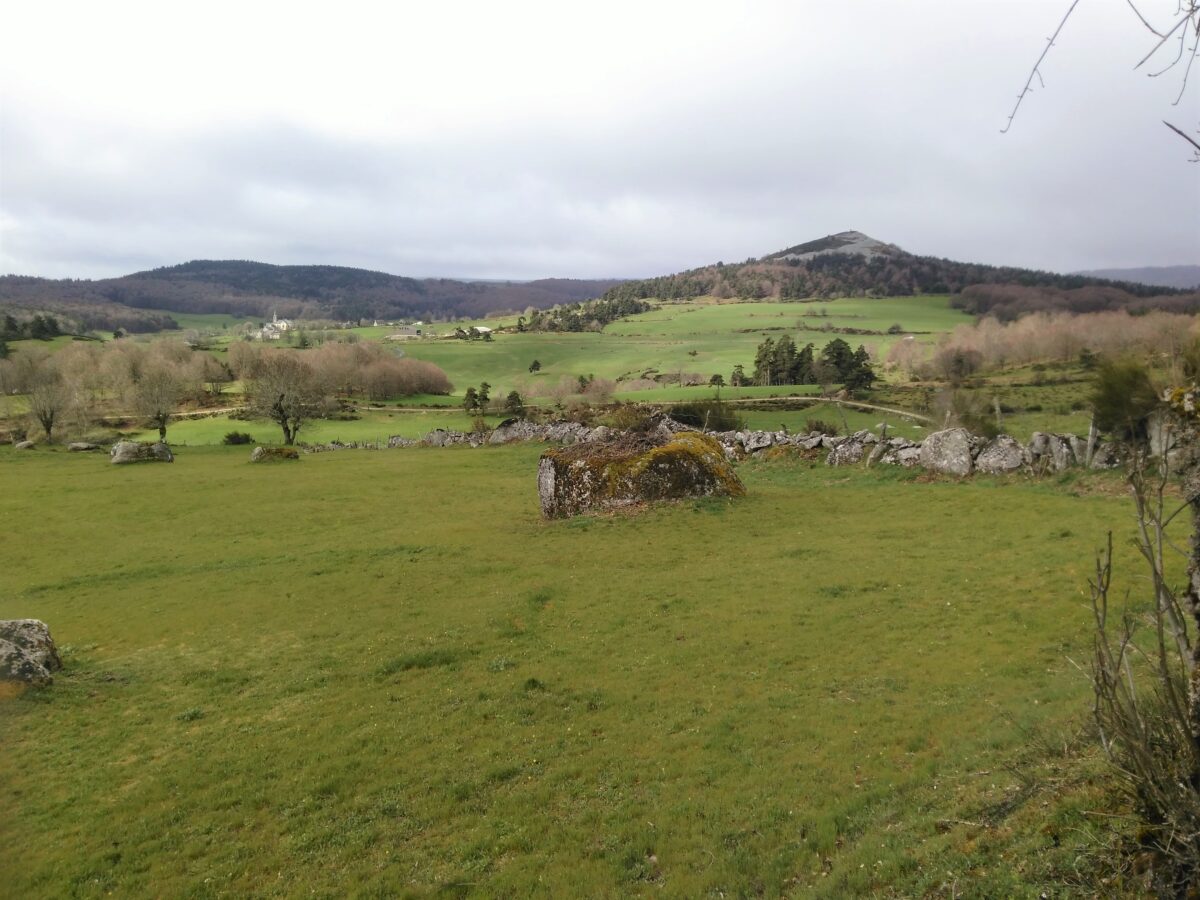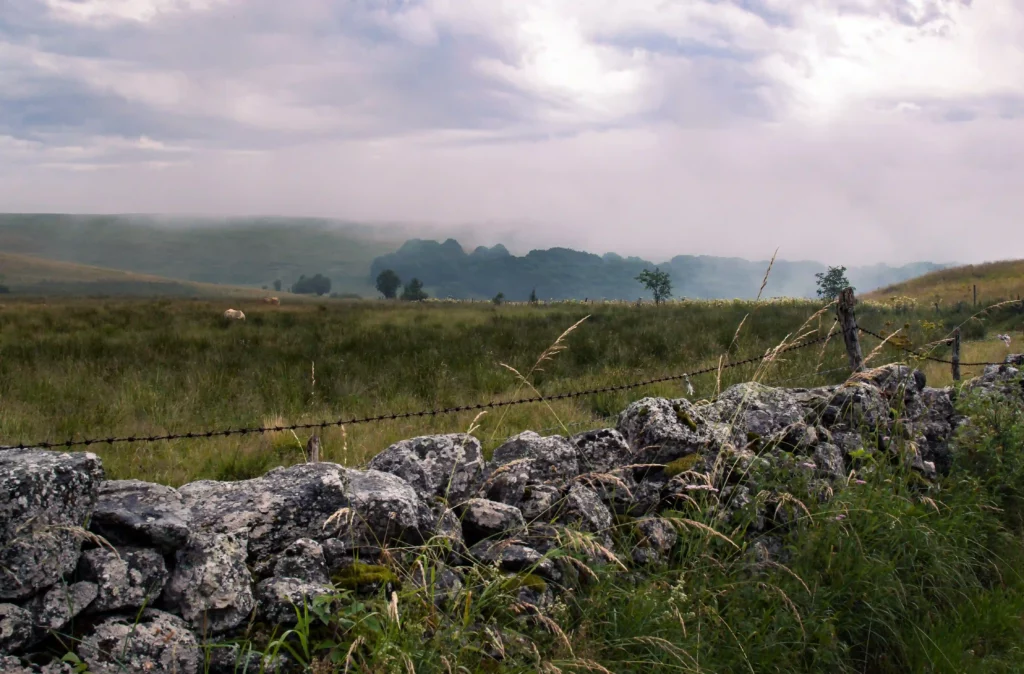Close
Explore

Back
Aubrac, a land of basalt, an immense high-altitude plateau, is fed by rivers and lakes. Gévaudan is the gateway to Aubrac from the east.
Aubrac is a rural mid-mountain region with a well-preserved heritage. Its landscapes, history, culture, recognized know-how and environment are nonetheless vulnerable and under threat.
To preserve and develop the riches of this exceptional territory, local authorities, the State and socio-professionals have created a Regional Nature Park.
Located in the south of the Massif Central, the PNR de l’Aubrac brings together 64 communes, 14 partner communes and 6 Communities of Communes, straddling 2 regions (Occitanie / Pyrénées-Méditerranée and Auvergne – Rhône-Alpes) and 3 départements (Aveyron, Cantal and Lozère).
A land of contrasts, as much for the variations in altitude, climatic influences and seasonal forests, as for the variety of rocks and landscapes. Our villages of Antrenas, Bourgs-sur-Colagne, Le Buisson, Saint-Laurent-de-Muret and Saint-Léger-de-Peyre are an integral part of the PNR Aubrac, offering exceptional itineraries. Marvejols, the Belle du Gévaudan, is a pilot town.

Aubrac has a remarkable architectural heritage, both vernacular (burons, drailles, etc.) and religious (churches, monasteries, crosses), characterized by its integration into the landscape, with lava or granite walls and lauze roofs. Numerous sites and monuments are listed or classified as Historical Monuments.
Two sections of the Via Podiensis (pilgrimage route to Santiago de Compostela) are listed as World Heritage Sites by UNESCO for their authentic natural setting.
The mountain pastures and the Aubrac cow, a veritable icon of the region, bear witness to the intimate link between natural spaces and human activities.
Aubrac is characterized by its rich agropastoral heritage, with medieval rural archaeological remains that are very rare in Europe (traces of the Dômerie d’Aubrac and monastic barns), burons that were built as early as the 18ᵉ century on each “milking mountain” to house herdsmen and make cheese, stable barns and “drailles” that designate transhumance paths.


Transhumance, a living tradition, is still part of farming practices, and the nationally-renowned transhumance festivities attract several thousand visitors every May.
Aubrac gastronomy (aligot, stuffed cabbage, fouace, etc.) and local products (cheese, Laguiole knives, Aubrac beef, etc.) are just as much a part of traditional activities as stone and woodworking.
Last but not least, our culinary heritage is particularly highlighted today by the great names in gastronomy.


The combination of geographical, geological, climatic and human features has resulted in a wide diversity of landscapes and natural environments.
5 landscape entities make up the different faces of Aubrac
More than 1,000 plant species have been inventoried in Aubrac. Extensive grazing on the mountain pastures maintains the open space and favors floral diversity.
In terms of wildlife, Aubrac is a major migratory area for several bird species, including the Red Kite, as well as outstanding nesting sites . The forest, which occupies 30% of Aubrac’s surface area, is home to large mammals such as the Red Deer, as well as other protected mammals.
The numerous aquatic environments and wetlands in Aubrac are of major ecological and heritage interest. They are home to rare or endangered plant species, as well as numerous protected insects, amphibians, newts, reptiles and emblematic birds. Trout, crayfish, otters and pearl mussels also frequent the cool, oxygenated streams and rivers.

Building on these assets, and as a Pôle de Plein Nature recognized by the Massif Central, the Aubrac Regional Nature Park offers a rich and diverse range of outdoor activities in the Aubrac region .
The Park supports the “Espace Aubrac” project, which aims to structure the range of outdoor activities (skiing, mountain biking, hiking, horse riding, etc.) available on the high plateau, particularly at the 5 ski resorts of Bonnecombe, Brameloup, Laguiole, Nasbinals and St-Urcize. The Park also promotes outdoor activities related to water and verticality (climbing, canyoning, via ferrata, canoeing, etc.) in the Lot and Truyère valleys.